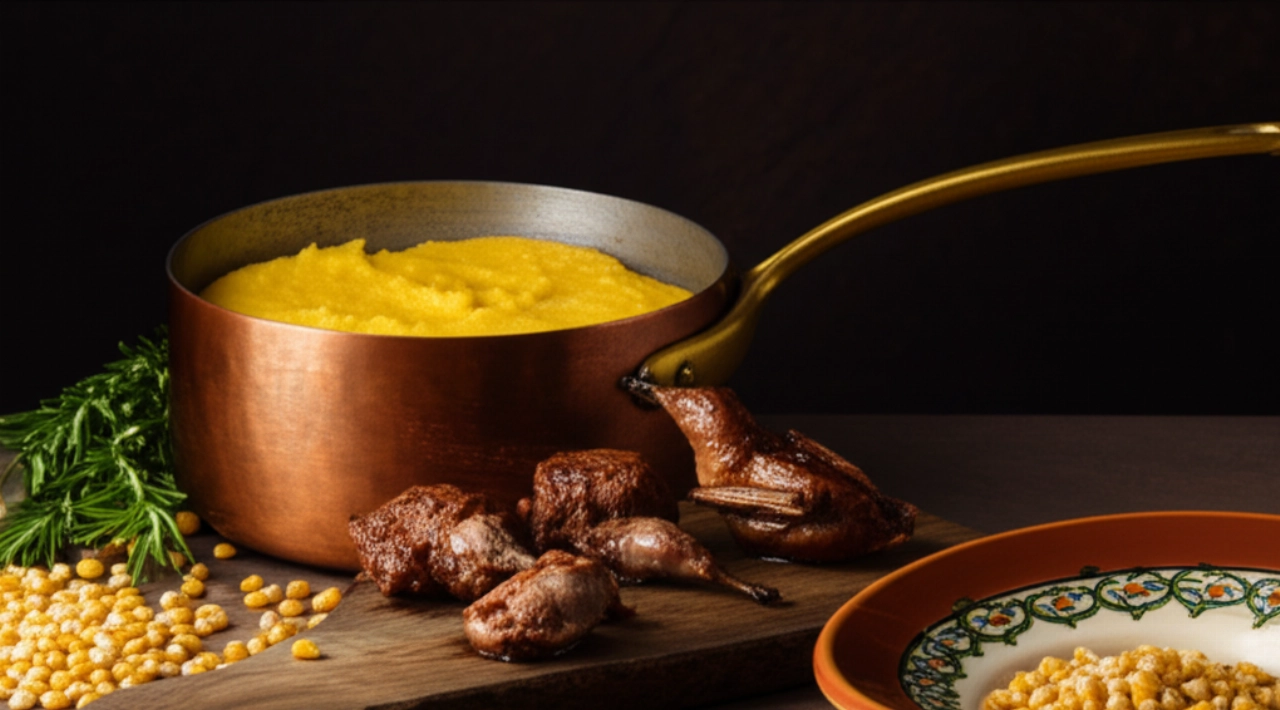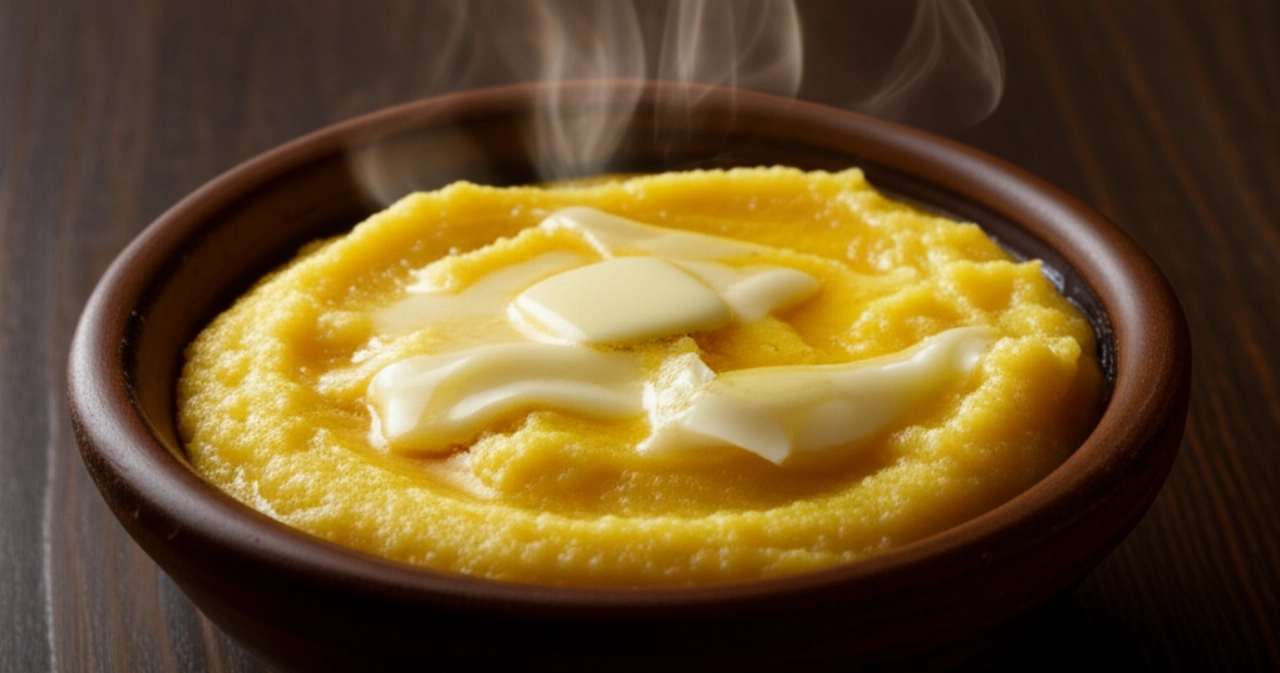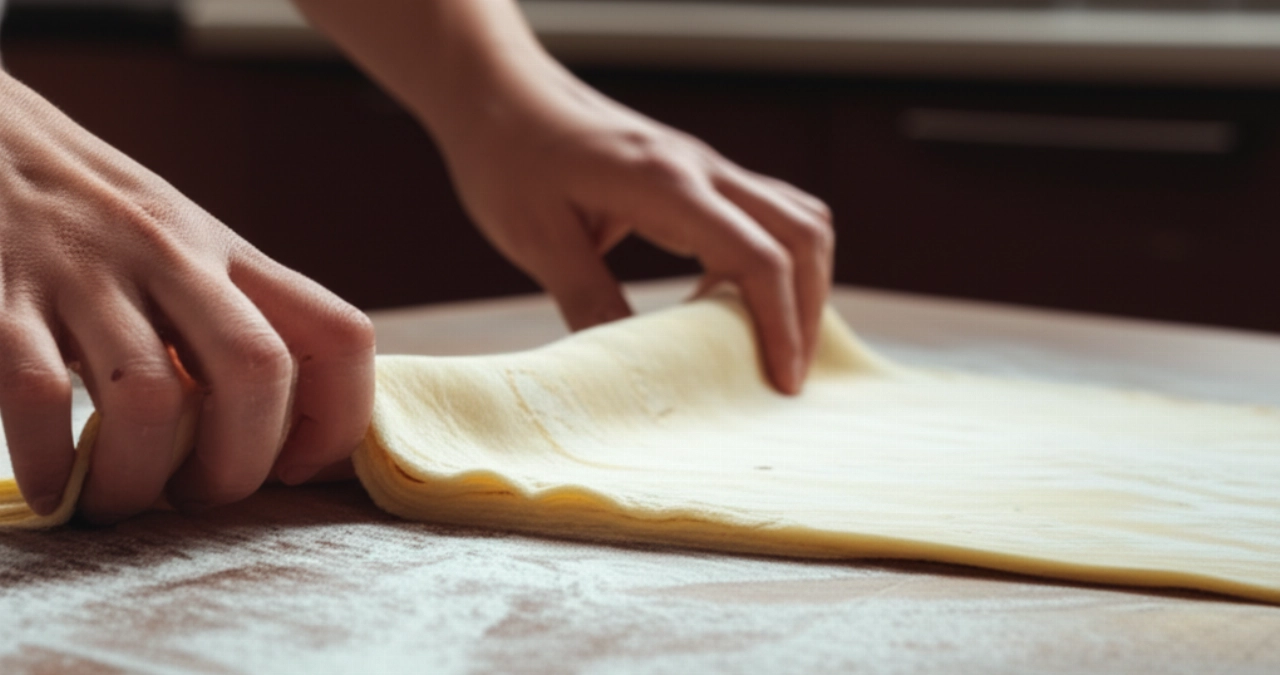Do you dream of bringing to the table a dessert that is a hymn to tradition, a masterpiece of taste and beauty that leaves everyone speechless? Polenta e Osei is more than just a cake; it's a symbol, a sweet embrace that encapsulates the flavors and history of Bergamo and Brescia, with its unmistakable shape reminiscent of polenta and its adorable marzipan 'little birds'.
But let's face it, its reputation as an elaborate dessert and the delicacy of its preparation can make it seem like an insurmountable challenge. The fear of not being able to reproduce its authentic magic, of seeing it 'deflate' or not achieving that aesthetic perfection that makes it unique, is real. Finding the right recipe, one that guides you step by step and reveals every secret, seems almost impossible.
Make yourself comfortable, take a deep breath, and smile. On this page, you won't just find a list of ingredients, but the definitive guide, full of secrets and practical tips, to prepare a Polenta e Osei that is not only delicious and faithful to tradition, but also visually impeccable. Success is guaranteed, and the scent of Bergamo and Brescia will fill your kitchen, bringing a piece of history and sweetness directly to your table. Get ready for applause!

Ingredients for a Dream Polenta e Osei: The Choice That Makes the Difference
For a masterpiece like Polenta e Osei, the quality of ingredients is the first, fundamental secret. It's not just a list, but a conscious selection that will make the difference between a good dessert and an unforgettable one. Here's what you need and why:
- High-quality butter (at room temperature): This is the base of our cake. Choose a good one, because its flavor will be noticeable. Using it at room temperature is crucial to perfectly 'cream' it with sugar, incorporating air and making the dough soft.
- Very fresh eggs (at room temperature): Eggs bind the dough and contribute to its structure. Here too, freshness is a must. At room temperature, they blend better with butter and sugar, preventing the dough from 'splitting'.
- Granulated sugar: For sweetness and to help create that frothy consistency with butter.
- 00 flour: The most suitable flour for soft cakes, because it has a low gluten content that does not make the dough elastic and gummy.
- Potato starch: A little trick for extra softness and lightness. It helps make the cake even more delicate.
- Baking powder: Our ally for perfect rising and an airy texture. Make sure it's fresh!
- Grated organic lemon zest: The citrus scent is a touch of freshness that balances the sweetness and enriches the overall aroma. Don't skimp on the quality of the lemon; it must be untreated.
- For the syrup (bagna): Water, sugar, and your favorite liqueur (rum, Strega, or another sweet liqueur). The syrup is essential to keep the cake moist and flavorful. If you prefer, you can make it non-alcoholic with sugar syrup and rum flavoring.
- For the pastry cream: Whole milk, egg yolks, sugar, flour (or cornstarch), and lemon zest. A velvety and fragrant cream is the heart of the filling.
- For the topping and decoration: Powdered sugar, yellow food coloring (gel or liquid), and of course marzipan for the iconic 'little birds' and decorations. The marzipan must be of good quality, easy to mold.

The 3 Mistakes That Can Ruin Your Polenta e Osei (and How to Avoid Them)
Even the most experienced can make mistakes, but with the right tips, you'll be one step ahead. Here are the most common pitfalls and how to avoid them to ensure the success of your Polenta e Osei:
-
Not respecting ingredient temperatures: This is a common but crucial mistake. If the butter is too cold or too hot, it won't blend well with the sugar. If the eggs are cold from the fridge, they will make the dough 'split', making it grainy. The secret? Take butter and eggs out of the refrigerator at least an hour before starting, so they reach room temperature. The creaminess and homogeneity of the dough depend on this!
-
Overworking the dough after adding flour: Once flour is added, gluten begins to develop. If you work the dough for too long and with too much energy, the cake will turn out hard and gummy, losing that softness that distinguishes it. The secret? Gently incorporate the sifted flour and potato starch, mixing only long enough for them to be absorbed. Use a spatula or wooden spoon and mix from bottom to top with light movements.
-
Not calibrating the syrup or baking time well: A cake that's too dry is disappointing, one that's too wet falls apart. Similarly, excessive baking makes it dry and crumbly, while insufficient baking leaves it raw in the center. The secret? For the syrup, pour it spoonful by spoonful over the still warm cake, letting it absorb slowly. For baking, always do the toothpick test: insert it into the center of the cake; if it comes out clean, it's ready. Every oven is different, so keep an eye on the cake and don't blindly trust the indicated times.

Grandma's Secret: That Extra Touch That Makes Polenta e Osei Unmistakable
My grandmother, with her wise hands and reassuring smile, when preparing Polenta e Osei, always insisted on a detail that for her made all the difference. She would tell me: "Remember, darling, finely grated lemon zest in the dough and a little bit in the pastry cream too. It not only perfumes, but balances the sweetness, gives an unexpected freshness, and makes the flavor 'cleaner', less cloying."
And then, she would whisper another piece of advice, almost a mantra: "Don't rush with the syrup. It must absorb slowly, like a secret unfolding, drop by drop. It's what will give the cake that moist softness and that enveloping flavor that will make you close your eyes." This small, but fundamental, tip is grandma's true touch, what transforms a good cake into a memorable experience, a true embrace of flavors.
Let's Prepare Your Polenta e Osei Together: The Step-by-Step Guide
Ingredients (for a 24-26 cm cake):
- For the base (yellow sponge cake):
- 200 g soft butter
- 200 g granulated sugar
- 4 large eggs (at room temperature)
- 200 g sifted 00 flour
- 50 g sifted potato starch
- 1 sachet (16 g) baking powder
- Grated zest of 1 organic lemon
- A pinch of salt
- For the syrup:
- 200 ml water
- 100 g sugar
- 50 ml rum or other sweet liqueur (or flavoring for non-alcoholic version)
- For the pastry cream:
- 500 ml whole milk
- 4 egg yolks
- 150 g sugar
- 50 g 00 flour (or cornstarch for a lighter cream)
- Zest of 1/2 organic lemon
- For the topping and decoration:
- 250 g powdered sugar
- A few drops of yellow food coloring (gel or liquid)
- 200-300 g ready-made marzipan
- Powdered sugar for dusting the marzipan
- Very little unsweetened cocoa (for the birds' eyes)
Required Tools:
- Stand mixer or electric whisk
- 24-26 cm springform pan
- Small saucepan for the syrup and cream
- Spatula
- Lemon grater
- Rolling pin and marzipan cutters (or skilled hands!)
Method:
1. Prepare the Base (Yellow Sponge Cake):
- Preheat and Prepare: Preheat the static oven to 170°C (340°F). Butter and flour a 24-26 cm springform pan.
- Cream Butter and Sugar: In a large bowl (or stand mixer), cream the soft butter with granulated sugar and grated lemon zest until you get a light, fluffy, and frothy mixture. This step is fundamental for softness.
- Incorporate Eggs: Add the eggs one at a time, waiting for the previous one to be completely absorbed before adding the next. The dough should remain smooth and homogeneous.
- Add Dry Ingredients: In a separate bowl, sift the 00 flour, potato starch, and baking powder. Gradually incorporate the dry ingredients into the butter and egg mixture, mixing gently with a spatula from bottom to top. Do not overwork the dough to avoid developing gluten.
- Bake the Cake: Pour the batter into the prepared pan and level the surface. Bake for about 40-45 minutes. Do the toothpick test: it should come out clean.
- Cool: Once baked, remove the cake from the oven and let it cool completely in the pan before unmolding.
2. Prepare the Pastry Cream:
- Heat the Milk: In a small saucepan, bring the milk to a boil with half a lemon zest. Turn off the heat and let it infuse for a few minutes, then remove the zest.
- Prepare the Yolks: In a bowl, whisk the egg yolks with sugar until you get a light and frothy mixture. Add the sifted flour (or starch) and mix well.
- Combine and Cook: Pour the hot milk in a thin stream over the yolk mixture, stirring continuously to avoid lumps. Transfer everything back into the saucepan and cook over low heat, stirring constantly with a whisk, until the cream thickens.
- Cool: Transfer the cream to a bowl, cover it with plastic wrap directly on the surface to prevent a "skin" from forming, and let it cool completely.
3. Prepare the Syrup:
- In a small saucepan, combine water and sugar. Bring to a boil and dissolve the sugar.
- Remove from heat and let it cool slightly. Add the rum (or flavoring) and mix.
4. Assemble the Polenta e Osei:
- Cut the Cake: When the base is cold, cut it horizontally into 3 equal disks.
- Moisten the First Disk: Place the first disk on a serving plate. Moisten the surface evenly with one-third of the prepared syrup, using a spoon or a pastry brush.
- Fill: Spread half of the pastry cream on the first moistened disk.
- Repeat: Cover with the second disk, moisten with another third of the syrup, and spread the remaining cream.
- Close: Place the third disk, moisten with the remaining syrup.
- Covering: Spread a thin layer of pastry cream also on the surface and edges of the cake, to "seal" it and help the sugar adhere better.
5. The Magic of Decoration:
- Color the Sugar: In a bowl, put the powdered sugar. Add a few drops of yellow food coloring and mix well with a teaspoon or your hands (with gloves) until you get a uniform yellow color.
- Cover the Cake: Generously sprinkle the cake with the yellow powdered sugar, making sure to cover the edges well. You can use a sieve to help.
- Prepare the Osei: Work the marzipan with your hands to soften it. Roll it out thinly with a rolling pin on a surface lightly dusted with powdered sugar. Using cutters (or freehand), create the "little birds" and other decorations (leaves, small flowers).
- Final Details: For the birds' eyes, use the tip of a toothpick dipped in a tiny bit of unsweetened cocoa dissolved with a drop of water.
- Decorate: Arrange the little birds and other marzipan decorations on the surface of the cake.
- Rest: Let the Polenta e Osei rest in the refrigerator for at least 2-3 hours (preferably overnight) before serving, so the flavors will blend perfectly and the cake will firm up.
Tips and Frequently Asked Questions about Polenta e Osei
Here are some of the most common questions you might have, with answers that will help you clear up any doubts:
Can I prepare Polenta e Osei in advance?
Absolutely yes! In fact, it's recommended. Polenta e Osei keeps very well in the refrigerator for 2-3 days, covered with plastic wrap or under a cake dome. The flavors will blend even better, making it tastier the next day.
How do I color powdered sugar yellow uniformly?
The secret is to use gel or liquid food coloring, but sparingly. Add a few drops at a time to the powdered sugar and mix vigorously with a teaspoon or, even better, with your hands (wearing gloves) to distribute the color evenly. If the sugar becomes too moist, add a little more white powdered sugar.
Where can I find ready-made marzipan or how do I prepare it?
Marzipan is easily found in well-stocked supermarkets, pastry supply stores, or patisseries themselves. If you want to prepare it at home, you'll need finely ground blanched almonds, powdered sugar, and egg whites (or rose/orange blossom water) to bind it. It's a slightly longer process, but it offers unique satisfaction.
Which liqueur should I use for the syrup? Can I make it non-alcoholic?
Traditionally, rum is used, but Strega or other sweet liqueurs also pair well. If you prefer a non-alcoholic version, you can simply use a sugar syrup (water and boiled sugar) flavored with vanilla, lemon zest, or a non-alcoholic rum flavoring. The important thing is that the syrup is present to provide moisture and flavor.
Why is my cake dry or breaking when cut?
If the cake is dry, it's likely that it was baked for too long or that the syrup was not sufficient. Make sure not to prolong baking beyond what's necessary (do the toothpick test!) and to moisten all layers well. If it breaks when cut, it might have been cut before cooling completely or didn't rest enough after assembly. Patience is key!
A Masterpiece of Sweetness and Tradition: Your Polenta e Osei
There you have it! Now you no longer just have a recipe, but all the secrets to bring to the table a Polenta e Osei that is a true hymn to traditional pastry, a masterpiece of taste and beauty that will speak for itself. Every slice will tell of your dedication, your love for authentic flavors, and your ability to transform simple ingredients into a work of art.
Don't be afraid to challenge yourself. Pastry is an art, and you have all the tools to create something extraordinary. Start from this solid base and you'll see that admiring glances and applause will not be lacking. The joy of sharing such a special dessert, prepared with your own hands, is priceless.
Have you prepared your Polenta e Osei following our tips? We are very curious to see your masterpiece! Leave a comment below, tell us how it went, or share a photo on Instagram by tagging @CercaRicette.it. If you loved this typical Bergamasque dessert, you can't miss our recipe for Grandma's Apple Pie, another timeless classic, or for a quick but delicious dessert like Chocolate Salami. Authentic cuisine awaits you!





